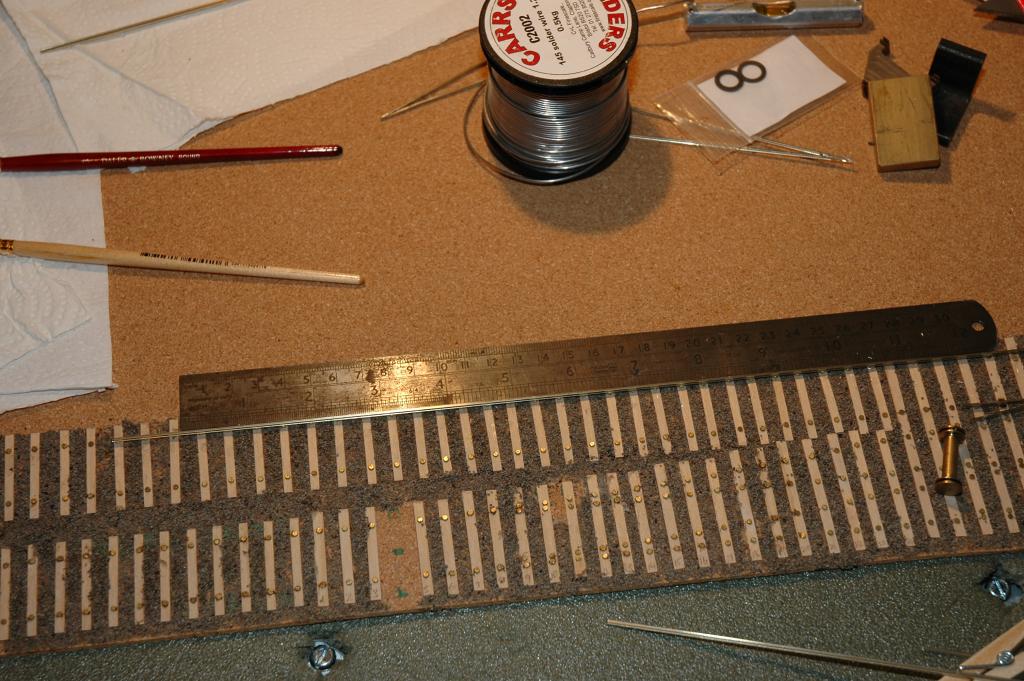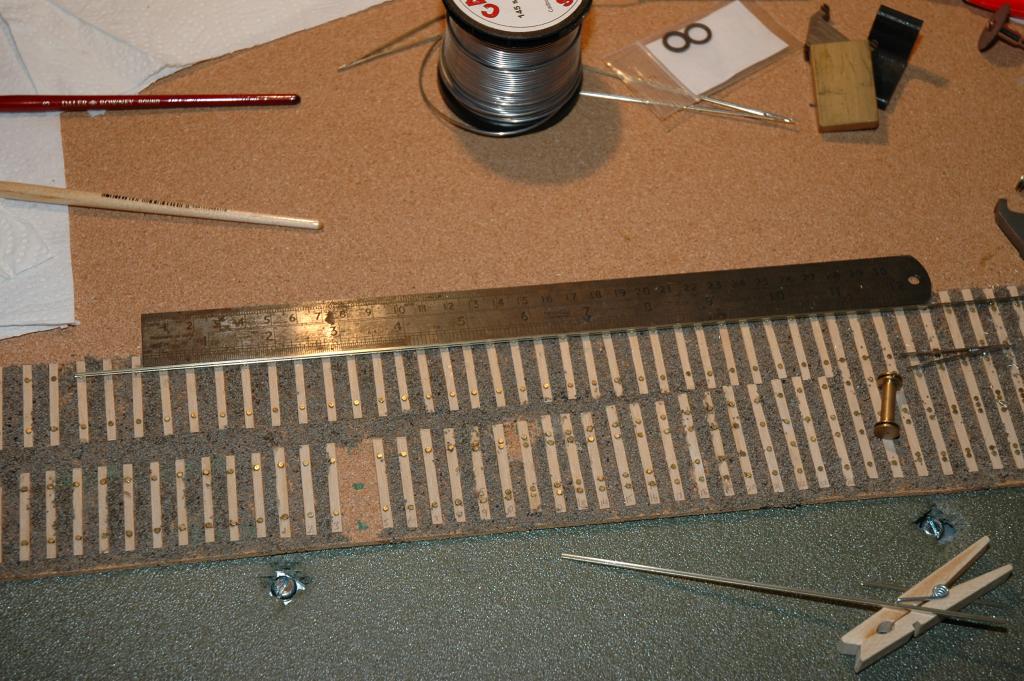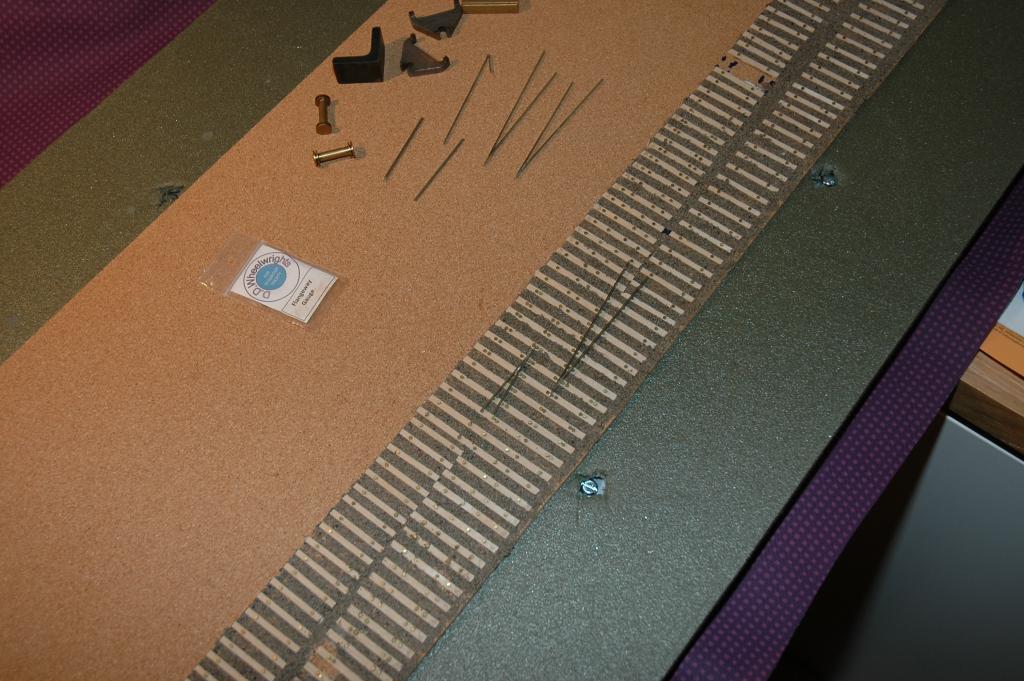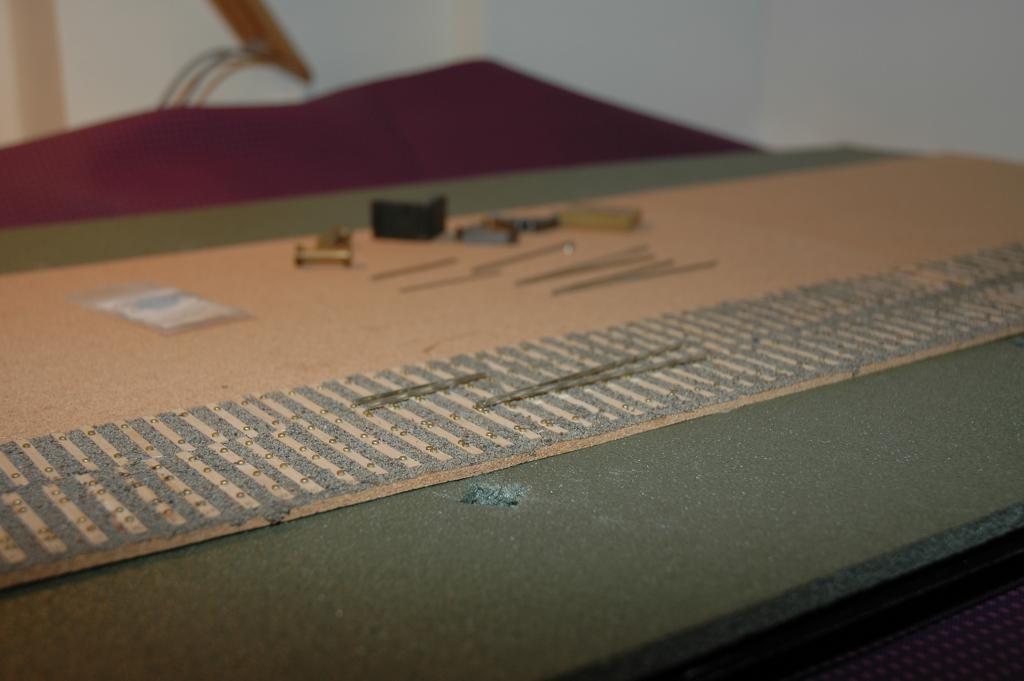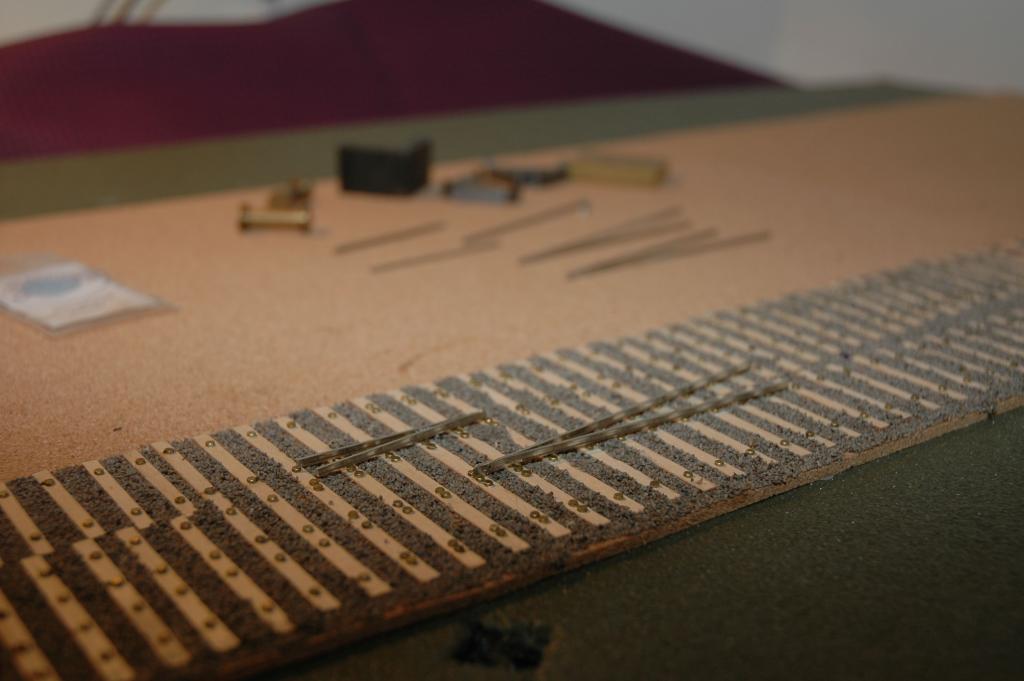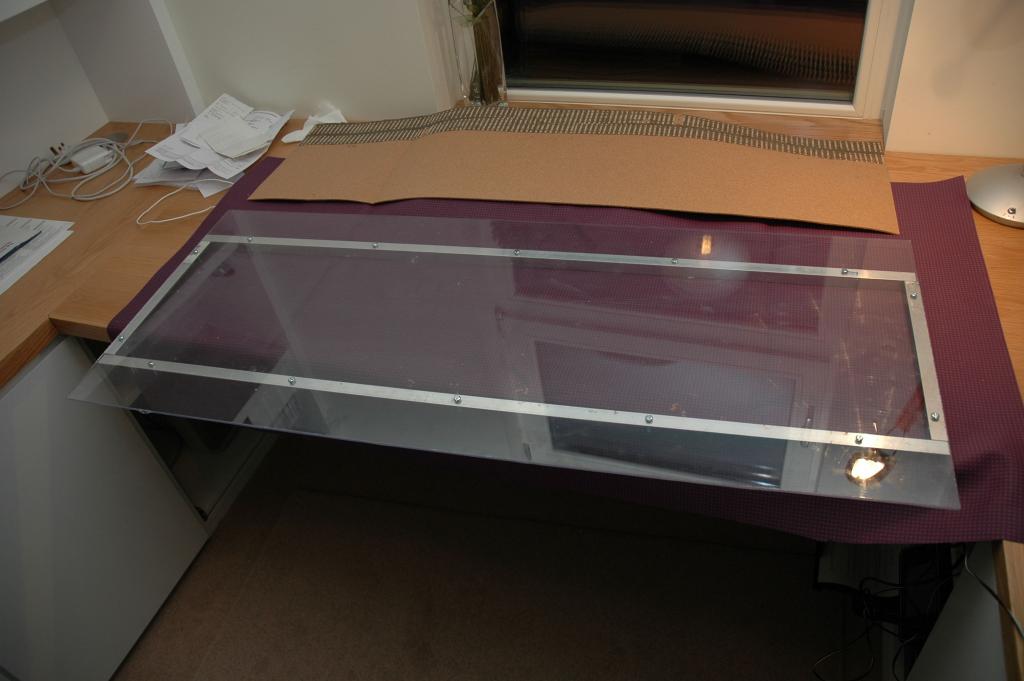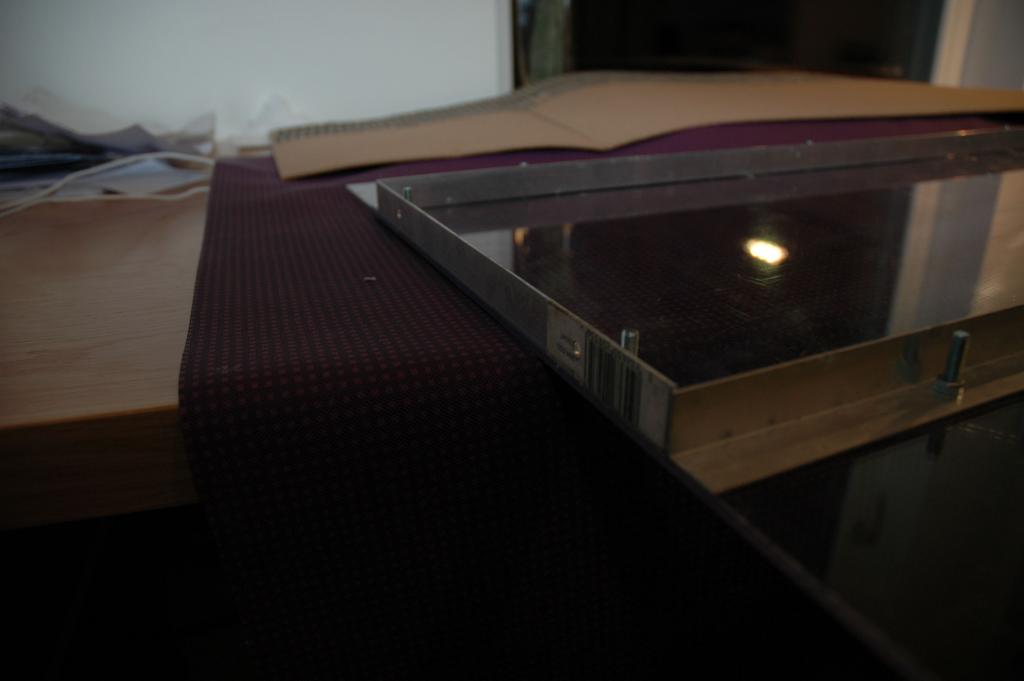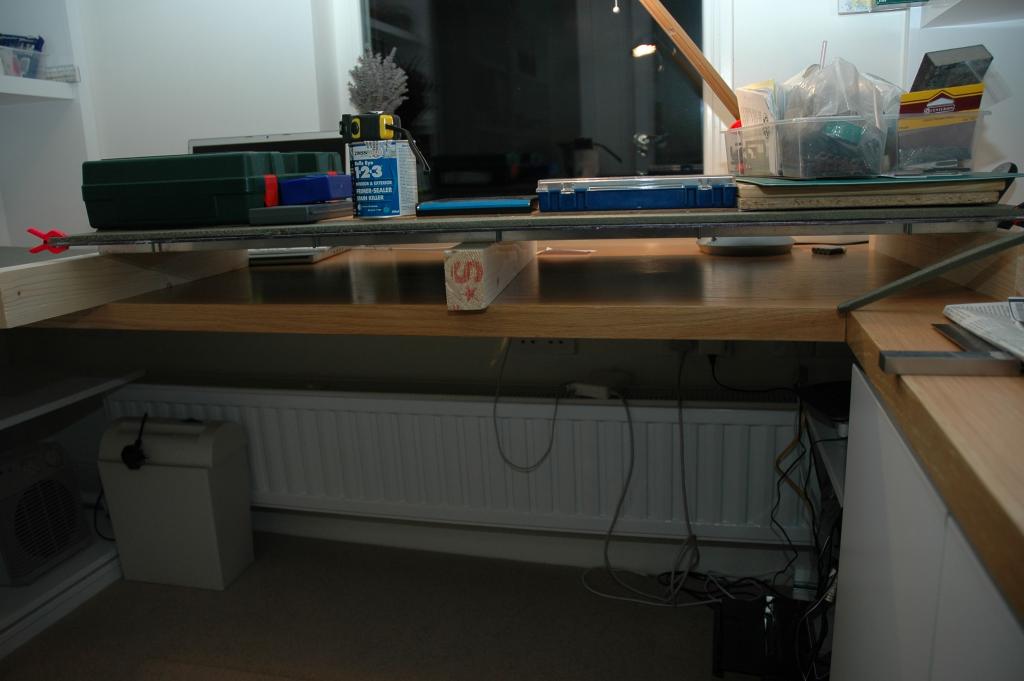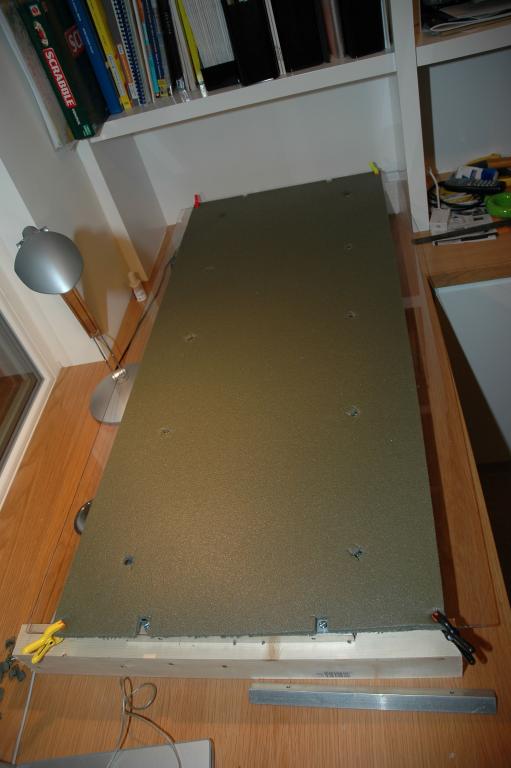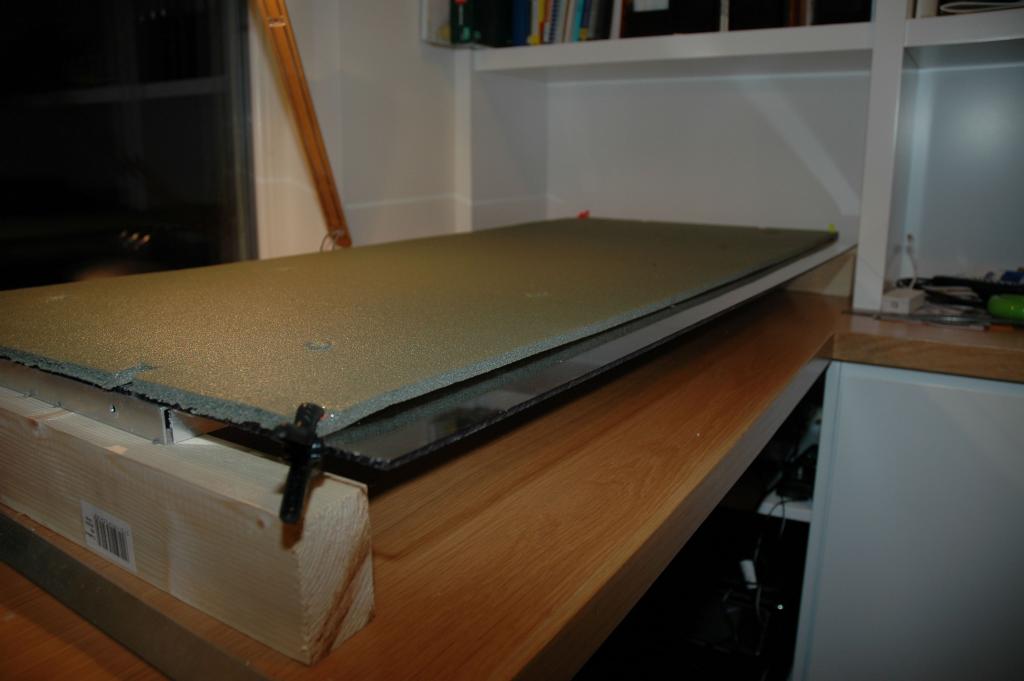
islandbridgejct
Members-
Posts
212 -
Joined
-
Last visited
Content Type
Profiles
Forums
Events
Gallery
Blogs
Store
Community Map
Everything posted by islandbridgejct
-
Moving on, the next lot show progress out from the crossing vees. 3 gauges in use: make sure of one end, make sure of the other end, then make sure it's alright in the middle, even though you know it's straight.
-
Thanks guys. You know, it just occurred to me that pushing a wagon through a set of points by hand is exactly what I used to do when I was 2. No change there then. A bit tired to take down the tools and do more tonight, so here's a few photos of how I built the track. Pretty much the same as before, but my soldering technique is improving thanks to the tips everyone gave. Exactoscale have moved in with C&L and now neither type of track is available, so it's probably as well I'm working on ply and rivet constructions. First step was to try to locate the 2 vees at 21mm from one another. Sleepers and ballasting were done on the cork before I had a board to lay the track on. Through sleepering puzzled me. With 00, you don't need it because the track separation is so great that you can use 2 full crossings, but with only 24mm between tracks, you have to lay a set of sleeper timbers spanning both sides of the crossing. I couldn't find a picture, because the track usually hides it unless the photo is taken from directly above. I eventually managed to take a look at the crossover at the north end of Grand Canal Dock. (I think I may have covered this before.) Enough waffle, here's the pics:
-
GSR & CIE locomotive list for grey, green or black livery
islandbridgejct replied to jhb171achill's question in Questions & Answers
Thanks jhb. I'm afraid I lost track of this thread for a while, or I'd have said that sooner. I'm hoping to do something set about 1900 to 1910, maybe with GSWR in green and black liveries, ex-WLWR in maroon and who knows, perhaps the MGWR in green and prussian blue. (Claremorris, Collooney, Athenry perhaps - thoughts keep moving around - maybe a single transferrable station.) But that's just getting carried away. For a start, I'll probably just try to stock it with diesel transition vehicles, because there are kits available and the painting and lining should be easier. Please keep the information coming. It's utterly priceless. Up to now, all I've been able to get is snippets in different books. Thanks for the sticky, Garfield. Alan -
You could make your own by folding some coloured paper. Iarnrod Eireann: the Origami Railway. Coming soon: build your own train from toilet rolls and sticky backed plastic. Alan
-
Taking up from where I left off, I got one track down, and the straight side of the crossing installed. Attached (hopefully) is the world's most boring model rail video. It's a man pushing a wagon - but hey, it's 21mm gauge, P4 standards and it stays on the track through the crossing. Hope it does the same when I get the diverging road in place! And when I get the points moving. Alan
-
Holy god. Can't wait to see more. Alan
-
Lovely work and great description. She's going to be a real beauty. Alan
-
And here is the start of some pointwork. I’m making vees using a method suggested by Brian Harrap on rmweb (http://www.rmweb.co.uk/community/index.php?/topic/37678-handbuilt-track/) The basic approach is very simple – fold to shape, solder the fold, cut off the excess, then file to shape. I still managed to get 2 duds by not folding properly, or trying to adjust later. I’m not sure how well they’ll work, but they seem strong and slightly less fiddly than the first one I made in the recommended way. dsc-0730 3 common crossings: 1st is OK, but the web of the splice rail is showing through; 2nd one doesn’t have the two rails level and is unfixable; 3rd is just a bad fold. dsc-0734 Clamp the folded rail to the board and solder the gap. (Don’t forget to clean first – I used emery paper, a fibreglass brush and alcohol before putting flux on with a paint brush.) The result is quite strong and will withstand filing to shape. dsc-0735 After a few bodged crossings, my 4th one worked out. dsc 0736, 0737 This is the trackbase, sleepers laid and ballasted, with the 2 vees sitting roughly in position. It was at this stage I realised that a crossover isn’t just twice as hard as a single set of points. It’s a whole order of magnitude more difficult. Oh well, in for a penny.... Clearly an awfully long way to go and progress is much too slow. Still, it's an entertaining way to relax for the last hour of the day. More to follow. Alan
-
Slow Train to Baltimore Well, after several months trying to make time available at a time of day that I could drill and saw without bothering the neighbours, I finally got my boards built over Christmas. Construction is sheets of clear polystyrene glazing held rigid with 20mm x 20mm x 2mm thick aluminium angle (all from Woodies – no connection, just another overcharged customer.) The idea is that all wood warps, so I need something that doesn’t. I posted this on rmweb to see if I got any helpful suggestions about ways to improve. The main recommendation was that I should have used 50mm, and the other comment was “I guess we’ll just have to wait and see”. Anyway, they’re together now, topped with a cheap bed roll (Army Bargains, off Capel St) and then 3mm cork sheet. It should work for sound deadening but I don’t know if the trains will stay on the track yet. I’ve measured it and I get a deflection of 1mm max on a 1.2m board, so I think I may be ok. Here are some pics. I’ve started laying track on it since these were taken. Alan
-
Very nice. Will look this up on rmweb. Alan
-
It really is excellent. Alan
-
Those are truly class. Alan
-
Thoughts on weathering, sidings and wagons
islandbridgejct replied to jhb171achill's question in Questions & Answers
Superb information thanks. I'd a number of questions at the start, but you answered them all. The only other one I can think of is whether people ignored the "Do not use the lavatory while the train is standing in the station" signs as much in the 50s and 60s as they did in the 80s and 90s - the track at platform 5 at Connolly used to have an oily, papered, lumpy texture that makes the weeds at cattle loading docks look like a health spa. Alan -
For ME this was the Enterprise
islandbridgejct replied to Flying Scotsman 4472's topic in General Chat
Thanks Kirley, but I should probably stick to the words too. I'm on my 5th attempt at a convertible van in plasticard - bought 3 from Des and they're lovely but then decided I couldn't have white metal filings and scrapings around the house after the trouble we went to to get rid of the lead paint. So the first one's too long. The second's too short. The third is just right, but the arc on the roof is wrong. Finally got the arc right by filing a piece of brass to the right shape and using it as a template. Now the floor is too low, or do I mean too high... I actually preferred the 071s - I loved the high whine of the turbo, and still do - with a rake of ACs, but they didn't come until later (the CIE set had a 001 and Cravens), and they weren't really 'the Enterprise' either. About 3 years ago we were out for a walk by the Royal Canal and I heard a low throbbing sound in the distance, just on the edge of hearing. Train coming I thought, and listened again, but couldn't hear anything, just the wind in the bare branches, but it kept coming back - a distant rumble almost out of earshot. Then it picked up and eventually after 4 or 5 minutes an 071 came into view with 10 or 20 timber on, rumbling away at about 25 miles an hour. Whether it's whining to itself on a siding at Limerick Junction, pitching up and down as it sways along the main into Portmarnock, or grumbling along with any freight that's thrown at it, accept no alternative. Anyway, NIR painted them a funny colour but you always knew they were the real deal underneath it. Alan -
For ME this was the Enterprise
islandbridgejct replied to Flying Scotsman 4472's topic in General Chat
April 1973 or thereabouts. My granny used to bring me to Malahide on a Friday evening. She said the twigs pointed up to heaven in Spring time. There'd be an up cement, down push-pull, down semi-fast to Dundalk, and then, about 5.40, the signals would clear again, the blue and maroon trailer would appear beyond the quarry sidings, stream under the bridge, wheels beating on the rail joints, quick count - 8 coaches, and then the Hunslet at the back would roar through the station, shattering the peace, whirling leaves and papers in its wake, and rock out across the estuary. It was twice as loud as anything CIE ran and the silence seemed to seep slowly back into the vacuum it left behind it. I was 6 years old, and that was the Enterprise. Alan -
GSR & CIE locomotive list for grey, green or black livery
islandbridgejct replied to jhb171achill's question in Questions & Answers
Great info. Thanks. So the livery on 36 is prototypical and was used until about 1870? I had assumed it was made up by CIE in the 50s. I read that 90 was an 0-6-4T until 1915. Do you know would the carriage portion have been in purple lake? (Any chance of a sticky on this topic?) Alan -
Yellow lines alomg station platforms
islandbridgejct replied to FrankS's question in Questions & Answers
Certainly makes me feel nervous standing at Butler's waiting for a coffee. -
Picked these up from Ernie's flickr while browsing the beet wagons question. http://www.flickr.com/photos/irishswissernie/5768598952/in/photostream/ http://www.flickr.com/photos/irishswissernie/5768030353/in/photostream/ You've probably come across them already. I hope the links work. Alan
-
Yellow lines alomg station platforms
islandbridgejct replied to FrankS's question in Questions & Answers
Yellow lines came in with the DART (for 1984) and probably spread system wide later. I think I read somewhere that white lines were introduced in the UK during the blackout, to make it easier to see the edge in the dark. Michael Baker's "The Railways of the Republic of Ireland" shows Connolly, Pearse and Heuston without white lines in 1972-73, and now I come to think of it, I don't remember Malahide having white lines up to the early 80s. (Could be wrong on that though.) Don't forget the signs saying "Warning! Trains may pass at speed." Or the graffiti saying "The last one was in 1952." Alan -
Tail lamps on Irish Trains
islandbridgejct replied to Robert Davies's question in Questions & Answers
Rob, I'd say ttc has that right. They were introduced after a rear-end crash. I don't remember which, but I'd say Cherryville is right. Up to then all lamps were oil. After that the battery powered ones came in. IR always used 2, and I heard somewhere that it was in case 1 failed, which never seems to have been a problem (or a consideration) with the oil ones. I had thought that they were activated automatically, with a switch dependent on the ambient light - by day, the signalman had to check for the white body, by night for the red light. That's for what it's worth: I'd say ttc knows more than I do. Alan -
I think they were still blue about 86, and I don't know when they changed after that. I don't recall seeing them with more than 10 hauled by a 001. I've a picture somewhere from about then. I'll see if I can root it out. Alan
-
Some technical points on this that might help. The curve for the roof seems too gradual and starts a bit too low down. When I look at them, the curve comes all in one go, and the sides are flat to a higher level and the upper roof arc is lower. Also, the front end is actually in 3 planes - the centre window is flat and the windows either side are angled slightly backwards towards the sides - probably not more than 0.5mm but it will make a difference to the look. As regards the printing, have you considered printing on clear plastic and leaving the windows clear, then wrapping around a former and sticking down - it could give the flush glazing look (and it is very flush) and still leave the windows looking credible. Otherwise the proportions are quite nice. Just some thoughts - good luck with the project. Alan
-
Beautifully observed weathering - could be the real thing. (No prizes for guessing who tagged the Taras, I see.) Alan
-
I'd say that's a Waterford line departure. If I remember right, the Dublin - Rosslare link went over to AC stock some time in the late 80s. I don't remember the push pull units on the line, but they may well have been. The early evening departure to Gorey had the Cravens for a good while afterwards, with a 141 / 181 on the head end. In fact, it may only have started a good while afterwards. I wasn't on the DART line from 93 to 09, so there's a big gap in my knowledge. I'm sure someone else will know. Alan
-
Liveries of Great Southern Railway
islandbridgejct replied to kenbac's question in Questions & Answers
JHB, I meant to say thanks, earlier, for the livery info. It's very useful. John, I think we're probably in agreement on the taxation and dividends issue. As I understand it, a company declares a profit, pays corporation tax on it, then puts part of the profit towards capital and part towards paying a dividend to the shareholders (who may complain that too much is being used to add to the capital). If you rebuild a loco, you can do it out of revenue, before you declare the profit. To build a new loco, you have to do it out of the money you have added to capital. Scarce capital was probably better employed on other projects such as resignalling. (And I'm not sure there even was corporation tax in the 1920s, so dividends may have been the only issue.) Sorry this is a bit off-topic. Martin Bairstow's 4th vol on the GSWR has some great photos from July 1914 (labelled LCGB / Ken Nunn) that show the lining and liveries about as well as black and white photos can. Alan
.png.c363cdf5c3fb7955cd92a55eb6dbbae0.png)

